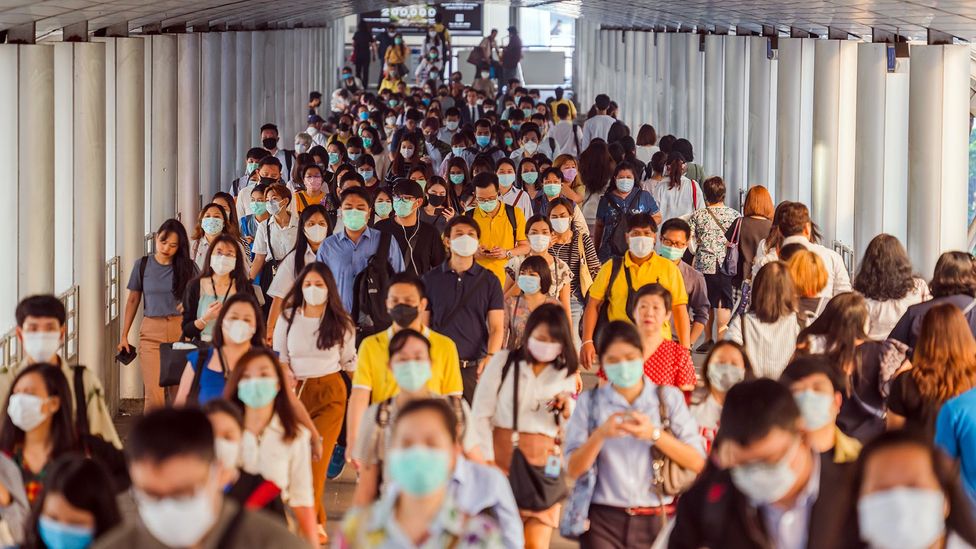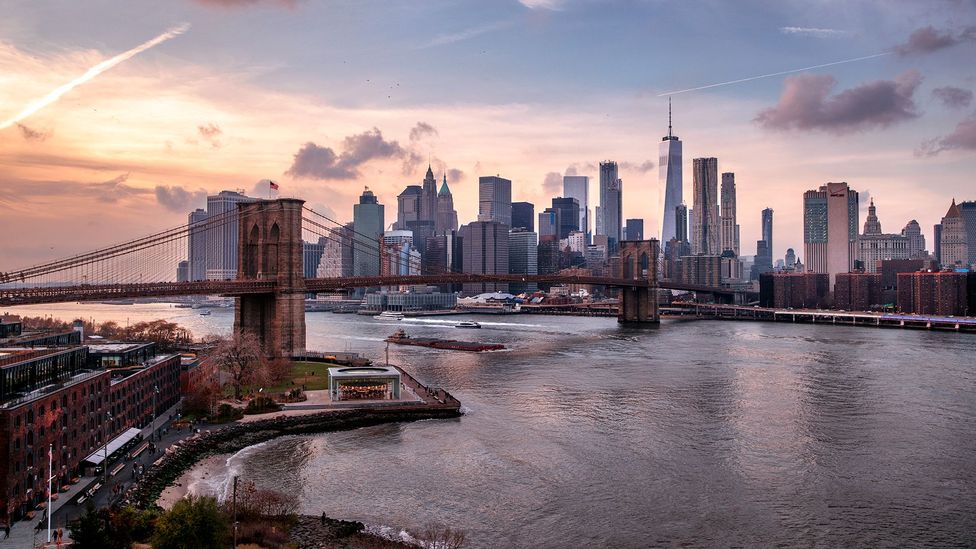“There is a density level in NYC that is destructive. It has to stop and it has to stop now. NYC must develop an immediate plan to reduce density.” So tweeted Andrew Cuomo, the governor of New York when the state of New York first went into lockdown amid the Covid-19 crisis.
The fear around urban density and the calls to reduce it have continued. There have been reports of cities emptying out – a potential mass exodus of people leaving high-density urban centres for more suburban and rural towns to escape the Covid-19 virus. A survey in May by the International Council of Shopping Centers found that 27% of adults in the US were considering moving homes because of the Covid-19 crisis. Greater still, 43% of millennials were considering a move, the survey found.
But for all the claims that pandemics prove urban density is bad, recent studies are suggesting the opposite. Data collected from 284 Chinese cities by The World Bank found that urban density may not be as much of an enemy in the coronavirus fight than we thought. In fact, cities with very high population densities such as Shanghai, Beijing, and Shenzhen had far fewer confirmed cases per 10,000 people than cities with lower population densities.
Similarly, one study found no association between the population density of 36 world cities (as measured in people per square kilometre) and rates of Covid-19 cases or deaths. And a study of 913 US metropolitan counties found that density is not significantly related to higher infection rate of COVID-19. And this may have more to do with behaviour than available space.

Stories predicting an exodus from major cities may have been premature as research has found no link between Covid-19 and population density (Credit: MR Cole/Getty Images)
"We found that people are more cautious about the threat in dense areas and are more likely to have protective behaviours," says Shima Hamidi, assistant professor of American Health, Johns Hopkins University.
Her research shows that the tendency among residents in densely populated areas is to be more cautious, better follow social distancing advisories, avoid crowded places and stay at home. This appears to have been borne out by the relatively low infection rates in numerous hyper-dense metropolitan area like Singapore, Hong Kong, Tokyo, and Seoul.
While there are other variables involved – such as a higher rate of mask wearing in Asian countries as well as coronavirus disproportionately affecting racial and ethnic minorities – the research appears to support the concept that overall density is not linked to the infection rate.
"It’s not about density, what really matters is how density is managed," says Sameh Wahba, global director for the World Bank's Urban, Disaster Risk Management, Resilience and Land Global Practice.
Wahba gives the example of Manhattan and Mumbai, which more or less have the same population density. However, Manhattan has four times the built-up area – the floor space – so for every bit of floor space in Mumbai there are four floors in Manhattan of built-up space.
"In Mumbai they have one fourth of the space available for each person in Manhattan to self-isolate," says Wahba. "So that makes people in Mumbai living in a much more crowded situation, even though they have the same population density because the built-up area is very different."
Wahba explains that the key point is how you transform an overcrowded city into “liveable density.”
"From what we’ve learned about how the virus spreads, the risk of infection is higher in crowded indoor spaces…bars, meatpacking plants, industrial warehouses, nursing homes, prisons, and cruise ships, not cities,” says Deepti Adlakha, an assistant professor in environmental planning at Queen's University, Belfast

Emergency response times tend to be much faster in urban areas while those in cities also tend to have access to better healthcare (Credit: Apu Gomes/Getty Images)
In fact, density can actually be good for us and is proven to have many surprising health and environmental benefits.
One study found that living in more compact, dense areas versus more sprawling areas makes a difference of about two-and-a-half years in life expectancy. Hong Kong, one of the most densely populated cities on earth has the world's highest life expectancy.
This is largely thought to be due to lifestyle choices. "People who are living in dense areas are significantly more likely to have physical activity," says Hamidi. "Density gives us the option to be physically active; walking, biking, running and less likely to drive. Chronic diseases such as obesity, diabetes, cardiovascular disease – all of these are linked to more sprawling types of development and living in more sprawling areas."
You might also like:
Dense metropolitan areas also tend to have better access to healthcare, higher-grade facilities, more specialised levels of services, as well as faster emergency response times. In fact, one study found that people living in more sprawling areas are three times more likely to be in a fatal crash than their counterparts in more dense areas.
You are also significantly less likely to be obese living in dense areas. A study by Oxford University and the University of Hong Kong showed that in 22 British cities people living in more dense areas had lower levels of obesity and exercised more than residents in scattered, suburban homes.
Again it comes down to a greater amount of movement and less reliance on cars to get around. “Higher density areas are more likely to be well served by public transport and public transport travel always involves a walking component," says Chris Webster, a professor of urban planning and development economics at the University of Hong Kong.
It's not just our physical health that benefits. According to Layla McCay, director for the Centre of Urban Design and Mental Health, “facilitating walking and [a] more vibrant street life can provide opportunities for positive social interactions and ultimately lessen isolation."
“You can’t beat what a city offers in terms of proximity to jobs, amenities, liveability, culture and diversity,” says Wahba, a self-confessed urbanite.
For Hamidi, also a city lover, moving to a neighbourhood in the city of Baltimore meant having the opportunity to walk, bike or run as well as the ability to use public transit and have a supermarket, restaurant or cafe within five minutes of walking.
However, liveable urban density that supports and facilitates these benefits is only possible with good planning and prior provision of infrastructure and public spaces. Otherwise the ills of urbanisation – congestion, crowding, pollution, crime and violence – can quickly grow out of control.

Manhattan has four times more floor space on each patch of land compared to Mumbai, leading to greater crowding in the Indian city (Credit: Nico De Pasquale/Getty Images)
"If local government is totally unable to plan for and provide services, the cities grow by virtue of informal development – people begin crowding in the slums or squatting and you get unplanned urbanisation," says Wahba. "If you are going to be living with an absence of proper housing conditions, an absence of proper infrastructure, lack of planning, lack of public spaces and lack of amenities, then density in this case becomes detrimental.”
Income level also has a significant bearing on one’s quality of life and health in a city. Those on lower incomes are more likely to have reduced access to healthy food, public and private amenities, higher prevalence of chronic conditions and lack of paid medical leave or health insurance. Households with lower incomes are also more likely to live in overcrowded housing units, making individuals more vulnerable to infectious diseases such as Covid-19. Some studies report that mortality rates in poorer neighbourhoods are more than twice that in the richest areas.
In cramped conditions with lack of personal space, it is nearly impossible to follow social distancing guidelines. In Singapore, the overall rates of Covid-19 were low, but the majority came from migrant workers dormitories that were housing up to 20 people per room.
Another often highlighted drawback of living in dense places is housing affordability. "Taxes, property taxes and the monthly rent tend to be higher in cities and the housing units tend to be smaller than suburban areas," says Hamidi. "So these are some of the factors that make people rethink when they’re considering moving to cities.”
Hong Konger Eva Li, who works in finance, has no plans to leave the city despite being hit by both the global pandemic and political turmoil. “It’s my home,” she says. “Mostly everything I need is on my doorstep. I’d hate to live in a place where I would have to drive to even get groceries.”
In fact Li is hopeful that the pandemic might even bring some positive changes. “We have areas in Hong Kong like Sham Shui Po where people live in tiny sub-divided flats and even cage homes,” she says. “I hope more attention will be given to those crowded areas that are more at risk of infection spreading. There is too much inequality here and I think, more than ever, there’s an urgent public health need for the places in our city that were left behind to be given more attention."
Pros and cons aside, what’s certain is that the global pandemic has made many people rethink their living situtation. So what does this mean for the future of cities?
"It is very unlikely that the pull of the city will significantly change," says Webster. “Cities, economic development, wellbeing and cultural enrichment of society go hand-in-hand. People thrive when they cluster together… The greater the number of people living in a town or city, the more and the higher quality the cultural, leisure, healthcare and other services and experiences. Small-town life is small town life for a reason."
--
Join one million Future fans by liking us on Facebook, or follow us on Twitter or Instagram.
If you liked this story, sign up for the weekly bbc.com features newsletter, called “The Essential List”. A handpicked selection of stories from BBC Future, Culture, Worklife, and Travel, delivered to your inbox every Friday.
"bad" - Google News
December 02, 2020 at 06:09PM
https://ift.tt/3lsJB4R
Why cities are not as bad for you as you think - BBC News
"bad" - Google News
https://ift.tt/2SpwJRn
https://ift.tt/2z7gkKJ

No comments:
Post a Comment